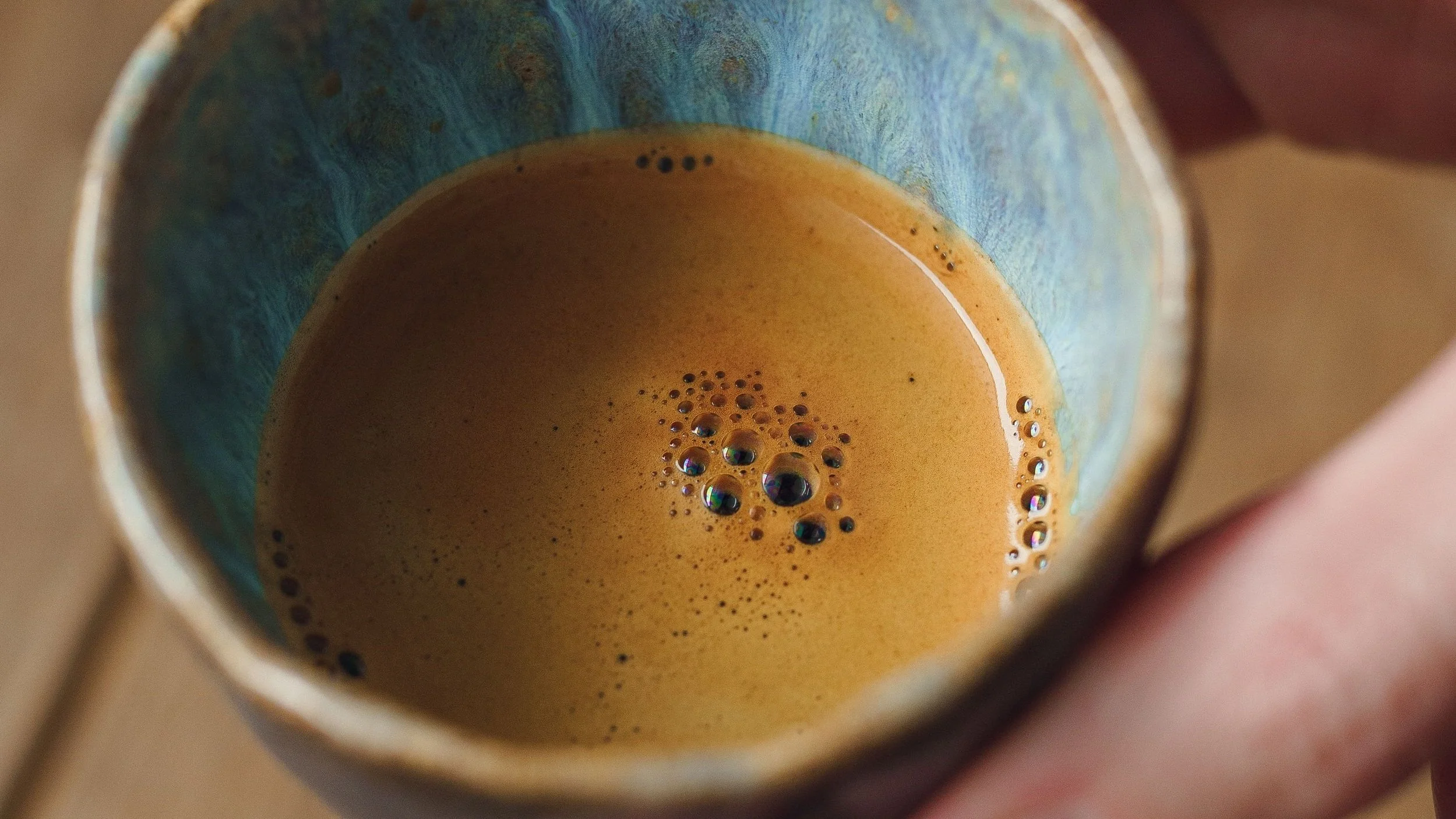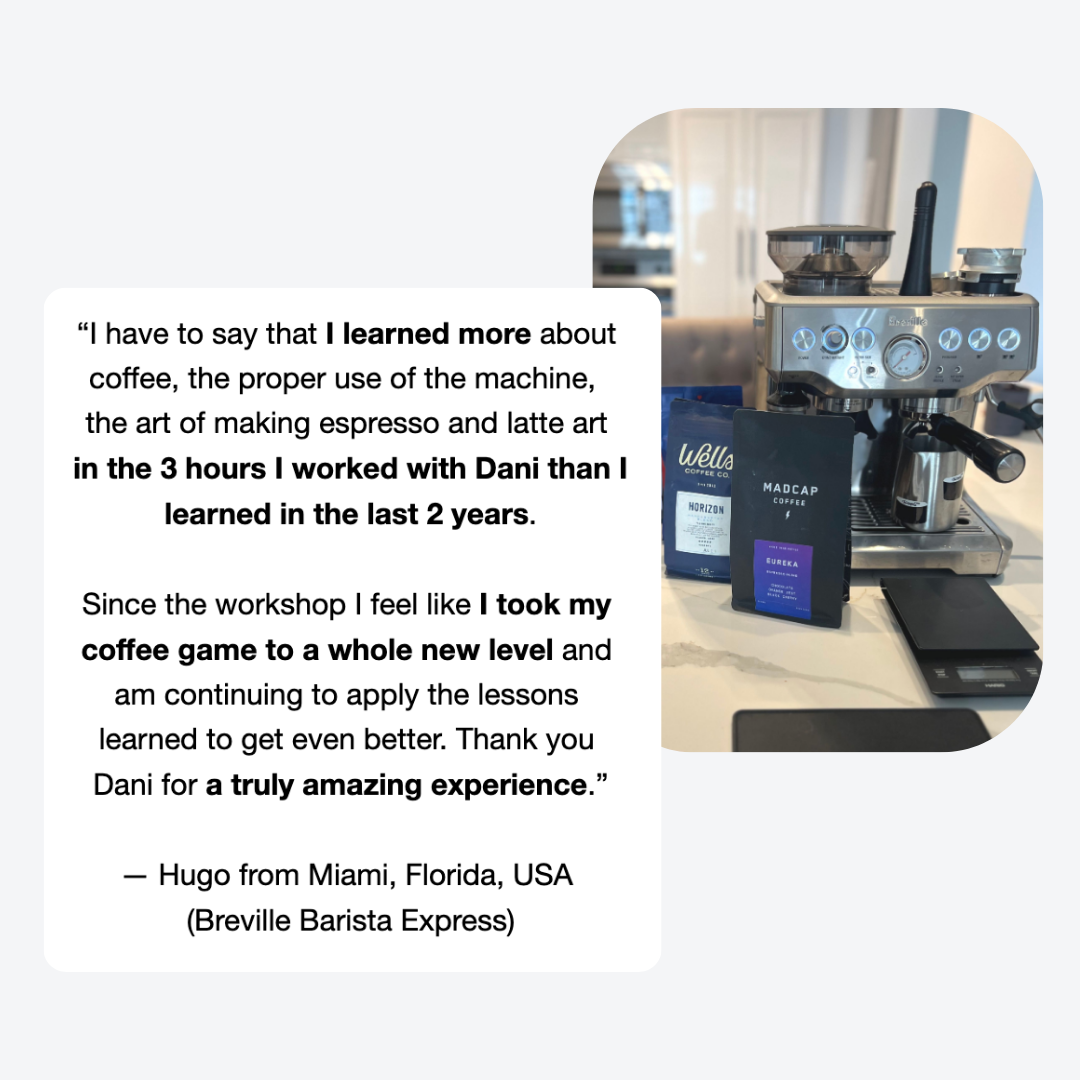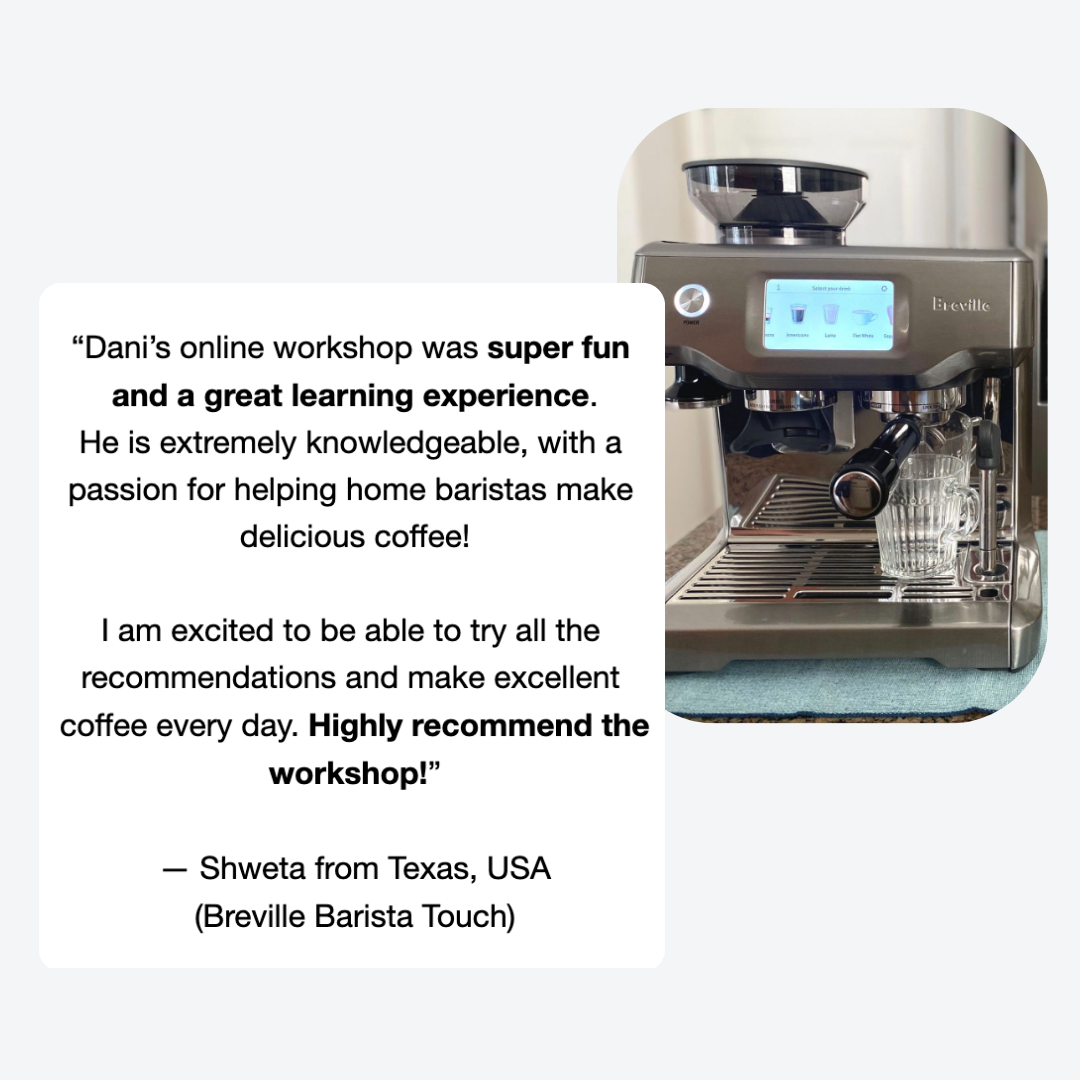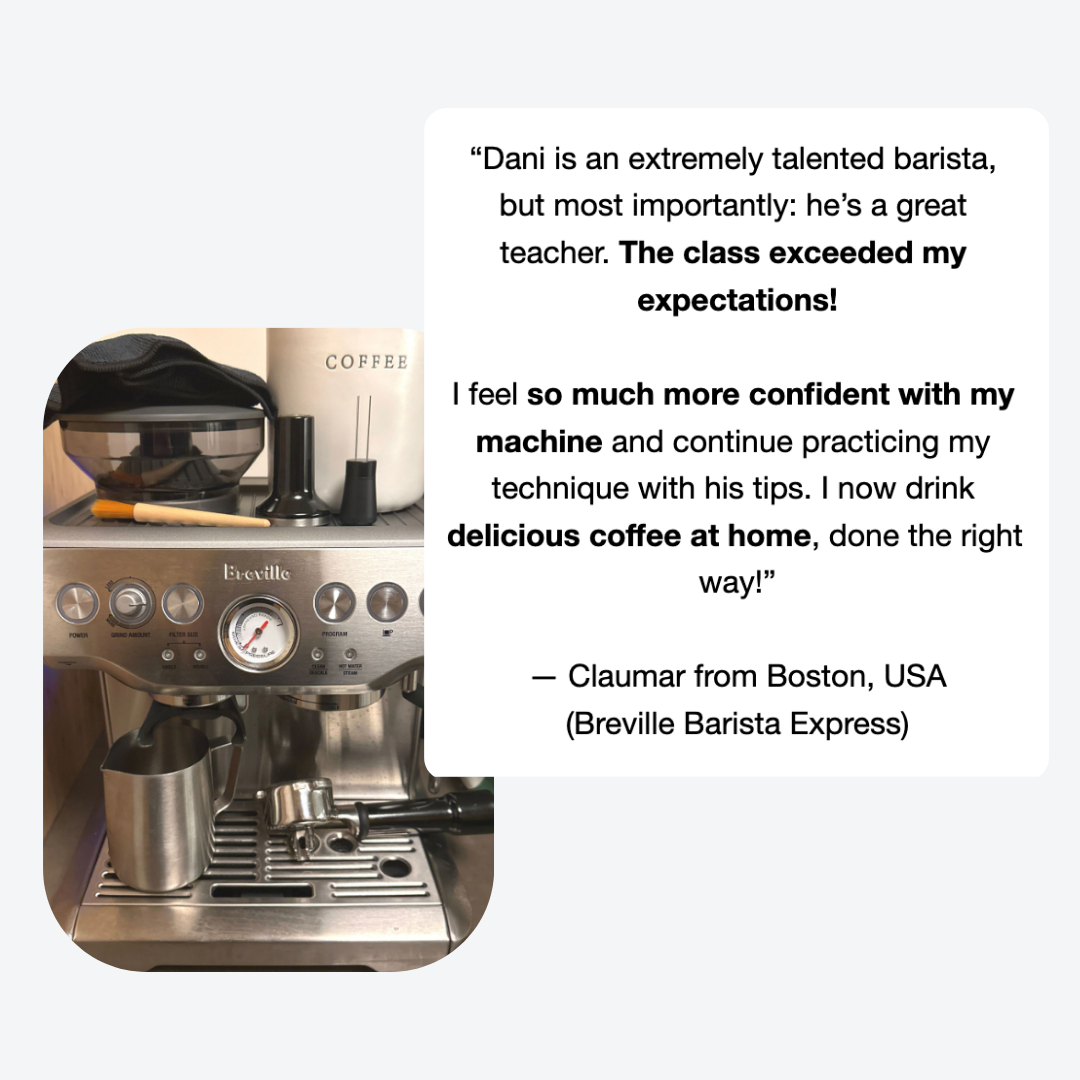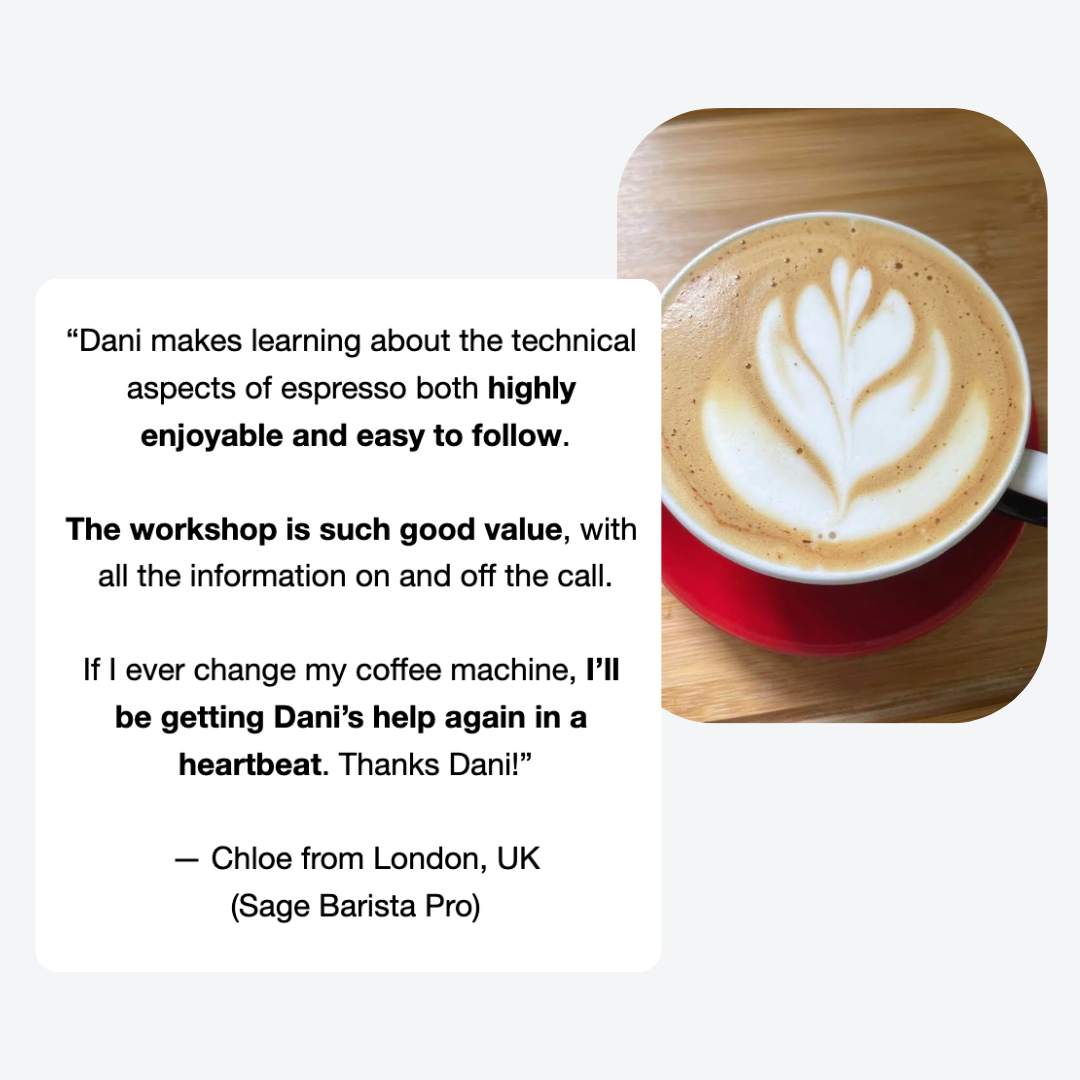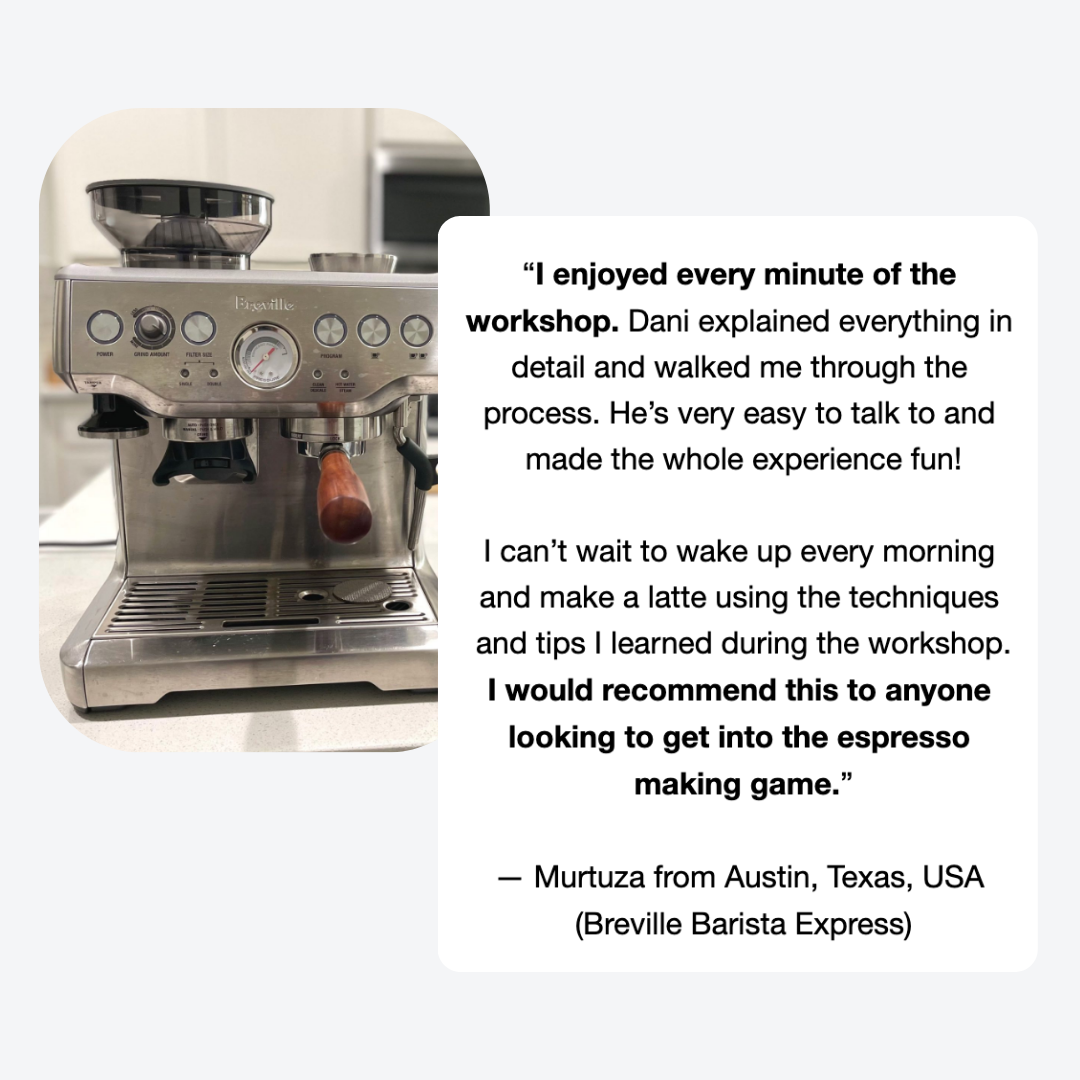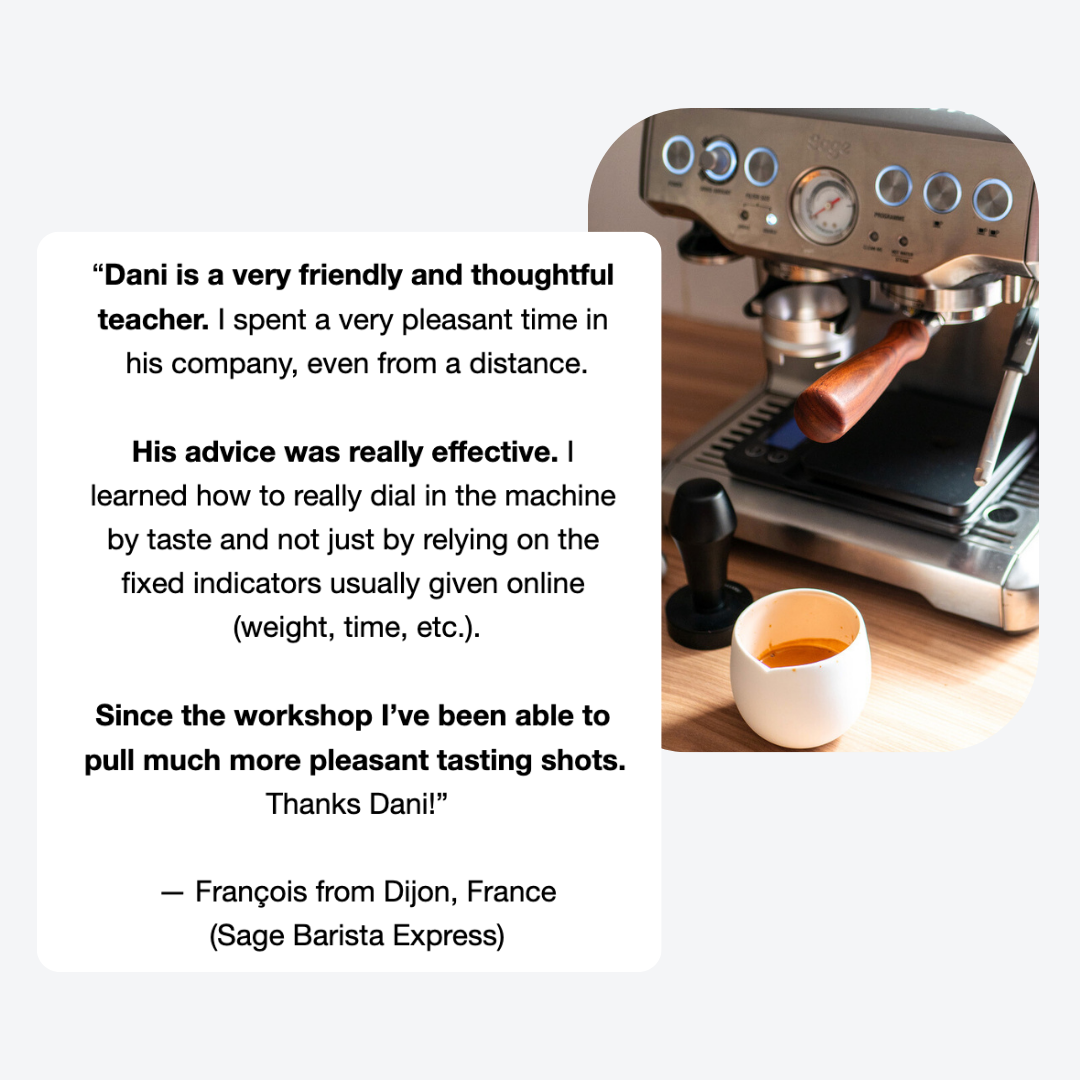How to dial in a dark roast espresso at home
3 tips for a delicious espresso
First of all, when we use the term dialing in we’re essentially referring to the process of making a balanced and flavourful shot of espresso. We do so by adjusting variables such as water temperature, grind size and yield (amount of liquid espresso in the cup). And, we’re looking to extract the right flavours, as well as the right amount of espresso.
Since no two coffee beans are the same (they are sourced from different coffee producing countries, as well as processed and roasted differently), it means you’ll have to go through the dialing in process every time you change coffee beans. I also consider it a very valuable learning exercise for everyone, be it a professional or home barista.
Because of a higher solubility, it’s easier to over-extract a dark roast, and get a bitter and astringent shot of espresso. So, the objective of this article is to discuss the particularities of this roasting style and offer practical advice on how to adjust your recipe (again – water temperature, grind size and yield), so that you end up with a delicious cup of espresso!
What is a dark roast?
To keep things very simple, a dark roast refers to coffee beans that have undergone a longer roasting time. It’s important to know that roasting beans at different levels not only changes the color of the coffee beans, it also changes the coffee beans’ physical and sensory attributes. Dark roasts are characterised by:
low acidity
a heavy mouthfeel
a more pronounced bitterness
a stronger flavour profile, with chocolate and nutty undertones
When thinking about roast profiles, I think it’s also helpful to understand that each roaster is subjective in the way they interpret and apply light, medium and dark roasts. So, keep an open mind, as it may take some adjustment when switching coffee beans from one roaster to another.
How can you recognize a dark roast?
Let’s say you were given a bag of coffee beans and it’s the first time you’re taking a closer look at them. What are some of signs to look out for that can indicate you’re dealing with a dark roast?
Packaging
In many cases roasters will include, alongside other relevant information, a description about the roasting level. It can be communicated as “dark roast” or explained through the use of a numbered scale (e.g. “on a scale from 1 to 7, this coffee has a roast level of 6”). Often, the packaging can also include a brief description of the flavour notes you may expect to find when tasting your espresso (more on this in the paragraph below on “Flavours”).
Color
Visually, dark roasted coffee beans display a deep shade of brown going into dark chocolate color. If the beans have undergone a long roast time, they may also have a shiny surface, from the inside oils that have surfaced during the roasting process.
Flavours
Compared with light roast coffees (which are fruitier and have brighter taste notes), dark roasts are often bold and have a rich texture. The longer roasting time usually produces flavours such as chocolate, molasses or caramel. Sometimes they can have a bittersweet or toasty taste.
What is espresso over-extraction?
Before we go any further, it’s important to clarify a term that we refer to often in the second half of this article: over-extraction, one of the most common challenges home baristas run into when dialing in a dark roast espresso.
The right extraction results in an espresso with rich flavours, balanced acidity and little bitterness. Over-extraction occurs when we go beyond the “sweet spot” i.e. when we pull too much of the soluble flavours present in coffee. And not in a good way! When it comes to tasting and analyzing flavour, remember that:
unpleasant (and often lingering/persistent) bitterness
dryness and
an empty aftertaste/finish
are often sensory attributes associated with over-extraction.
3 tips to dial in a dark roast espresso at home
Tip 1: Dark roasts require a lower temperature
Dark roasts are a lot more soluble. This is why they will require adjusting to a lower temperature, to avoid over-extraction (and therefore pulling unfavorable and unpleasant flavours into your espresso).
For a standard medium roast, I start at 93°C/200°F brewing temperature. But, with a dark roast I’ll adjust to 1 - 2 degrees lower. It really depends on the specific coffee beans you’re using, so I recommend tasting your espressos and adjusting the temperature until it works best for you.
Tip 2: Consider grinding coarser for a dark roast
Dark roasts extract easier compared with a medium or light roast. So, I recommend having a look at your grinder settings and grind a little coarser than you would normally do.
By reducing the contact time with the water (since you’re grinding coarser, the water will flow quicker through the coffee bed), this will help you avoid over-extracting the coffee.
Tip 3: Reduce the amount of espresso extracted
As you might have read on many of my articles on this blog, espresso brew ratio is the ratio between the amount of dry ground coffee that goes into the basket (i.e. dose) and the weight of liquid espresso extracted in the cup (i.e. espresso yield).
When you’re working with a dark roast, consider pulling a smaller amount of espresso in the cup. Running a shorter extraction will further help reduce the bitterness of dark roasted coffee. You’ll achieve a sweet espresso, with a great thick texture and intense in flavour.
For example, at home, I would usually dose 18 grams and extract around 30 - 33 grams of espresso out. It’s smooth and syrupy, and works wonderfully well as a base for milk coffees! See my article on how to make a delicious latte at home.
I hope you find these tips helpful and, if you’d like to dive deeper, you may consider our espresso and latte art home barista workshops. Happy brewing!

